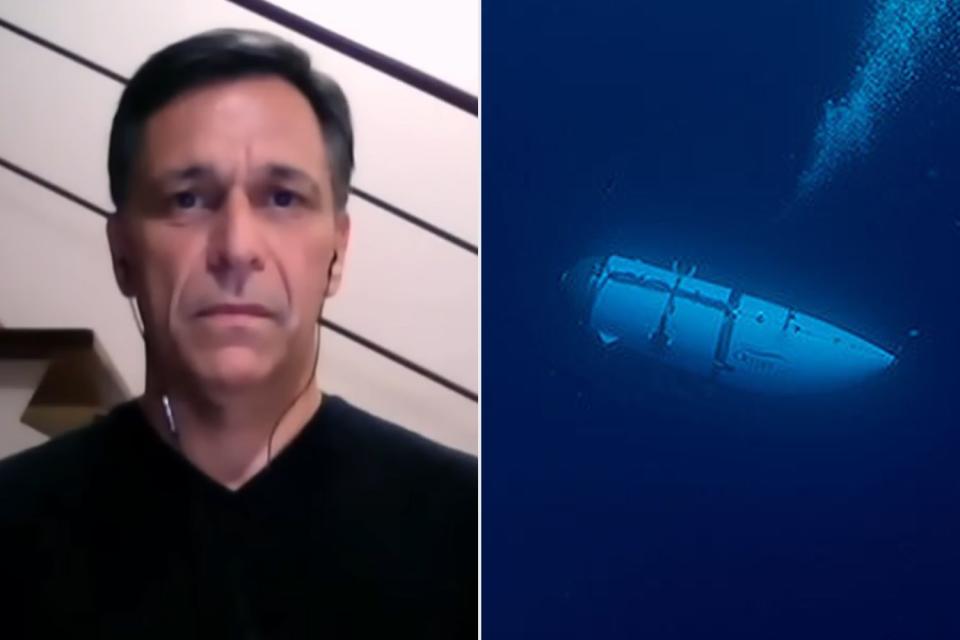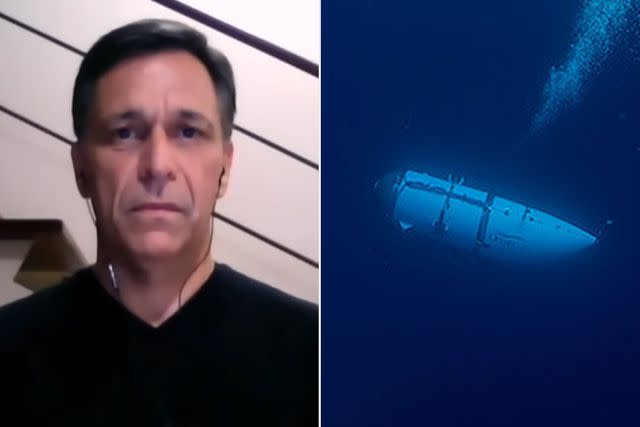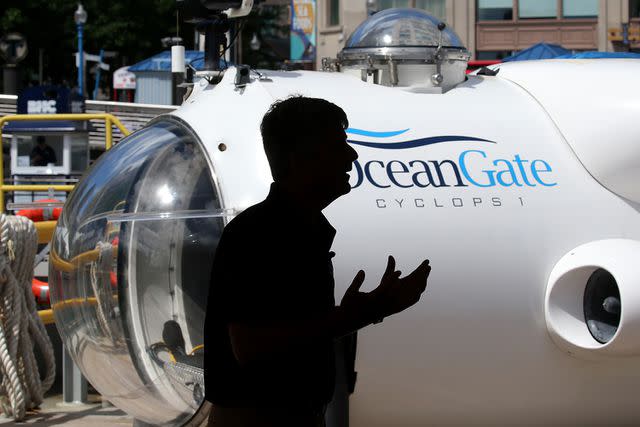OceanGate Co-Founder Defends ‘Titan’ Sub After James Cameron Comments, Says Test Program Was 'Rigorous'

- Oops!Something went wrong.Please try again later.
Guillermo Söhnlein, who co-founded OceanGate in 2009 with CEO Stockton Rush, said the Titan sub "was very robust"

NewsNation/Youtube; Ocean Gate / Handout/Anadolu Agency via Getty Images
Co-founder of OceanGate Guillermo SohnleinThe co-founder of OceanGate is defending against some of the criticisms of the Titan submersible.
Guillermo Söhnlein, who co-founded OceanGate in 2009 with CEO Stockton Rush — one of the five who died on board the Titan — said the vessel went through a “rigorous test program.”
"I think one of the issues that keeps coming up is everyone keeps equating certification with safety and are ignoring the 14 years of development of the Titan sub," Söhnlein told BBC Radio 4's Today show on Friday, following concerns raised by director James Cameron and other experts.
"Any expert who weighs in on this, including Mr Cameron, will also admit that they were not there for the design of the sub, for the engineering of the sub, for the building of the sub and certainly not for the rigorous test program the sub went through,” continued Söhnlein, who left OceanGate 10 years ago but still retains a minority stake, per the BBC.

NewsNation/Youtube; Ocean Gate / Handout/Anadolu Agency via Getty Images
“This was a 14-year technology development program and it was very robust and certainly led through successful science expeditions to the Titanic even over the last three years.”
Söhnlein added that he thought developers were in a better position to understand the risks and how best to minimize them, and that technology and innovation can outpace regulation.

NewsNation/Youtube
OceanGate co-founder Guillermo SöhnleinRelated: Loved Ones of 5 'Titan' Submersible Victims Pay Tribute: 'We Are United in Grief'
His comments came after Titanic director Cameron, who has made 33 submersible dives to the wreckage of the ship, and other experts raised questions about the safety of the sub.
During an earlier interview with the BBC, Cameron, 68, had said OceanGate "didn't get certified because they knew they wouldn't pass".
"I was very suspect of the technology that they were using. I wouldn't have gotten in that sub,” explained the filmmaker.
Never miss a story — sign up for PEOPLE's free daily newsletter to stay up-to-date on the best of what PEOPLE has to offer, from celebrity news to compelling human interest stories.
Cameron also said that the deep submersible community had previously raised concerns about OceanGate's vessel, and had written to the company saying — as claimed by Cameron — “You are going on a path to catastrophe.”

David L. Ryan/The Boston Globe via Getty Images
Stockton Rush, OceanGate's CEO speaking at a press conference in JuneOceanGate announced the deaths of the Titan’s five passengers on Thursday afternoon.
"We now believe that our CEO Stockton Rush, Shahzada Dawood and his son Suleman Dawood, Hamish Harding, and Paul-Henri Nargeolet, have sadly been lost," the company said in a statement obtained by PEOPLE.
"These men were true explorers who shared a distinct spirit of adventure, and a deep passion for exploring and protecting the world’s oceans. Our hearts are with these five souls and every member of their families during this tragic time. We grieve the loss of life and joy they brought to everyone they knew,” the statement concluded.
In a press conference on Thursday, the U.S. Coast Guard confirmed that an ROV discovered debris 1,600 feet from the bough of the tailbone of the Titanic wreckage on the sea floor.
The Coast Guard said that the debris that they found was consistent with the catastrophic loss of pressure in the Titan chamber.

JOEL SAGET/AFP via Getty Images; Alamy; HANDOUT/OceanGate Expeditions/AFP via Getty Images; HANDOUT/DAWOOD HERCULES CORPORATION/AFP via Getty Images (2)
Paul-Henri Nargeolet; Hamish Harding; Stockton Rush; Suleman Dawood; Shahzada DawoodThe New York Times obtained a letter sent to OceanGate’s CEO Stockton Rush by the Marine Technology Society (MTS) in March 2018. The letter stated that "the current experimental” approach adopted by OceanGate and the decision not to undergo traditional assesment could result in potentially “catastrophic” problems with the Titanic mission on the sub.
Separately, US court documents show a former employee of OceanGate warned of potential safety problems with the vessel as far back as 2018, per the BBC. The documents show that David Lochridge, the company's former director of marine operations, raised concerns in an inspection report.
During his interview with the BBC, Cameron also called the similarities between what happened to the Titan sub and the loss of the Titanic and its passengers a "terrible irony".
"We now have another wreck that is based on unfortunately the same principles of not heeding warnings," he said. "OceanGate were warned."
He went on to say that he "felt in my bones" that the sub had been lost soon after it was reported that it had gone missing.
"I immediately got on the phone to some of my other contacts in the deep submersible community. Within about an hour I had the following facts. They were on descent. They were at 3500 meters, heading for the bottom at 3800 meters," he said.
“Comms were lost and navigation was lost and I said instantly, ‘You can't lose comms and navigation together without an extreme catastrophic event.’ A highly energetic catastrophic event and the first thing that popped to my mind was an implosion, so I felt in my bones what had happened,” he continued.
“So this entire week has felt like a prolonged nightmarish charade where people are running around talking about banging noises and talking about oxygen and all this other stuff and the coastguard is out with airplanes. I knew that sub was sitting exactly underneath it’s last known depth and position and that’s exactly where they found it.”
The vessel went missing on June 18 after setting out on a expedition to the wreck of the Titanic in the North Atlantic. However, approximately one hour and 45 minutes into the dive, the crew of the Canadian expedition vessel Polar Prince lost contact with the sub, according to the First Coast Guard District’s official Twitter account.
For more People news, make sure to sign up for our newsletter!
Read the original article on People.

